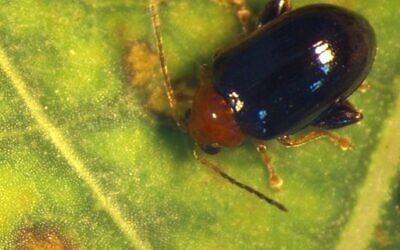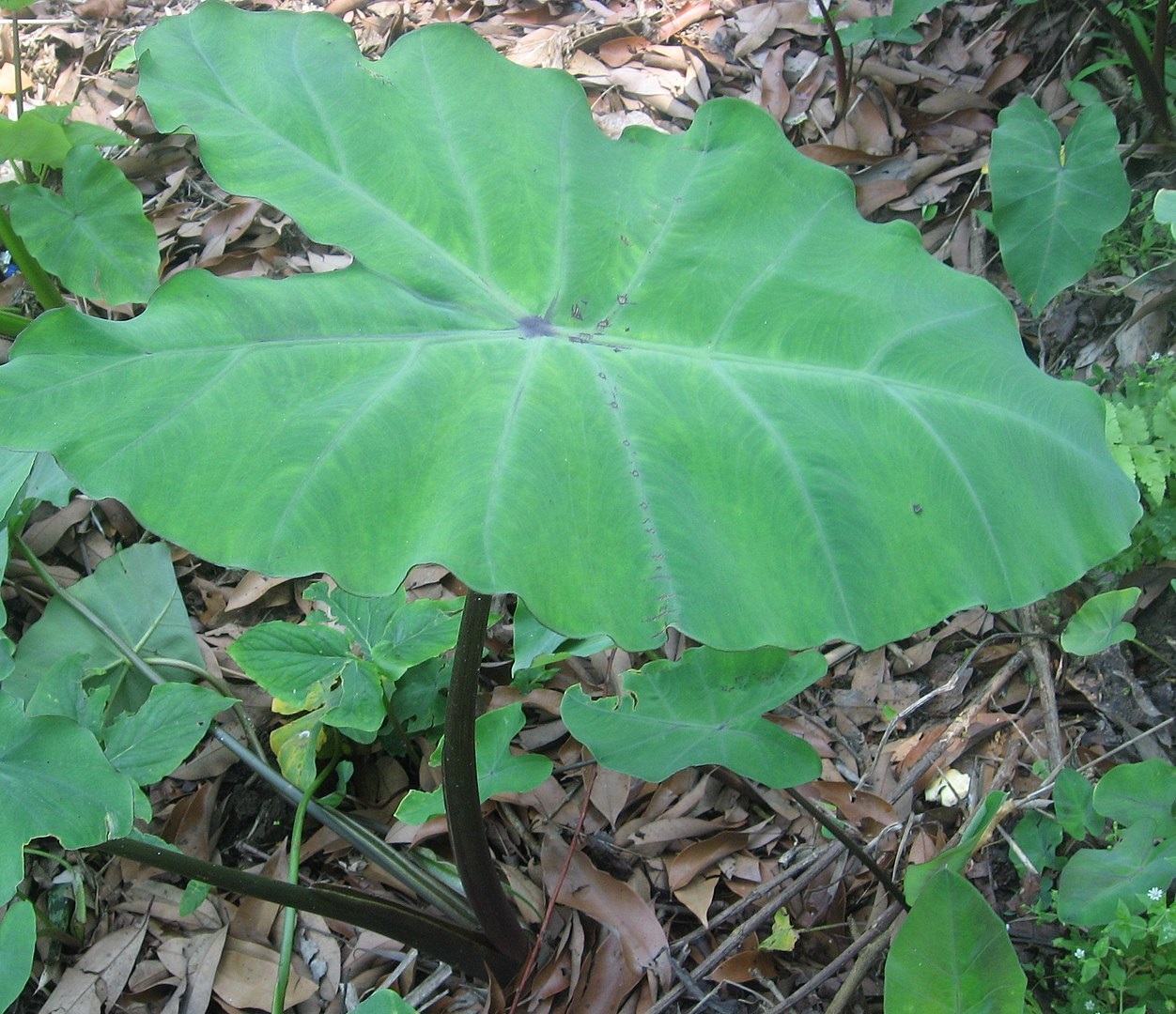Glowing trees that can replace street lights and spinach that can send out emails to warn of approaching danger sounds like the stuff of fantasy.
But a laboratory at the Massachusetts Institute of Technology, which is pioneering what its lead scientist Prof. Michael Strano has named plant nanobionics, is bringing these things closer to reality.
Rather than tampering with genes to get plants to do certain things, plant nanobionics inserts miniscule pieces of machinery into them — tiny engineered particles that can access a plant’s cells and even subcellular structures, such as chloroplasts.
Scientists have known for some time that plants communicate with one another and with the outside world, but Strano’s research opens the door for humans to hack into the signals a plant sends itself, getting the plant to report what is happening — via email.
“The plant is exquisitely sensitive to everything; for example, heat stress. It knows when there’s going to be drought before humans. It senses insect bites,” Strano told The Times of Israel in a Zoom interview.
In 2016, Strano’s lab published research showing that nanobionics could be used to tap into a plant’s super-sensitive detection capabilities, giving farmers and others access to the plant’s diagnostic tools.
Because they are not independently mobile, plants have developed an extraordinary set of skills to monitor and act upon the minutest of changes in their environment.

Prof. Michael Strano. (Screenshot)
Roots, which must look for water and nutrients, are able to detect substances that can endanger the plant, such as pollutants or soil-based pests.
Strano’s team managed to develop and embed minuscule sensors into the water-carrying vascular tissue of spinach leaves to pick up information about materials sucked up by the roots and sent to the leaves.
These sensors are made by combining infinitesimally small tubes with a polymer coating to create fluorescence and emit light.
The nanotubes measure 0.7 to 1.5 nanometers in diameter and can be hundreds of nanometers long. Given that 25,400,000 nanometers are equivalent to just one inch, they can only be seen with an electron microscope.
The glowing sensors are so tiny that they can literally be pushed into the leaf without harming the plant, where the fluorescence changes color the moment the target material binds with the polymer coating.
This color change is picked up by an infrared camera, which sends an alert to a cellphone or email address.
The groundbreaking research was originally designed to use plants to identify landmines, but it opens the potential for picking up on water quality, air pollution or a host of other changes.
The nearly five-year-old research made headlines again last month, thanks to a story from Euronews with the tantalizing headline “Scientists have taught spinach to send emails and it could warn us about climate change.”
Nothing says it’s 2021 like … https://t.co/EDIX5JN7NX
Crazy part is that it’s smart and gonna happen
— Mark Cuban (@mcuban) February 2, 2021
In November, MIT’s research enterprise in Singapore published research in which plant roots identified arsenic in groundwater — a real problem for many rice farmers who cannot afford laboratory testing.

In this August. 7, 2013, file photo, farmer Ben Burgess carries a type of low-yield rice from a rice field near Coy, Ark. (AP Photo/Danny Johnston, File)
Strano’s lab has also begun “turning the [nano]sensors inwards” to intercept chemical signals that the plant sends when it is under stress.
Plants don’t only detect problems, but also have “internal signaling like humans have nerves,” Strano said.
“On your phone you can see that the plant has experienced a bite which has broken the tissue, or that a part of the plant is too hot. This is a big breakthrough. It gives scientists and farmers and agricultural engineers real time information about what the plant is experiencing. It will lead to [the development of] agricultural tools,” he said.
In April 2020, Strano’s lab published research showing that signals sent as a result of “mechanical injury” could be picked up by a nanosensor.

This undated photo provided by the United States Department of Agriculture shows a flea beetle at the USDA/ARS Invasive Plant Research Laboratory in Ft. Lauderdale, Fla. (Gregory Wheeler/USDA via AP)
“It’s the chemical signaling to which scientists have not had access before,” he said. “If an insect bites, the chemical signal moves throughout the plant. In response, the plant will generate chemicals — volatile organic compounds — to try to deter or kill the invader or to attract a different kind of pest that will take care of it. When you smell cut grass it’s the grass [blades emitting volatile organic compounds] warning other grass that mechanical damage is on the way.”
Tree of light
A few years ago, Strano’s team came up with a way to make plants glow by inserting three types of nanoparticles, one of them enriched with luciferase, the enzyme that enables a host of creatures to attract mates or food or to repel enemies by bioluminescence — they literally light up.
“You could eat one of our glowing plants,” he said, although, laughing, he admitted that he didn’t know whether the eater would light up as well.
The aim is to produce — via “chemiluminescence” — enough plant light to enable a human to read, Strano went on, adding that an architect working with the team confirmed that it had already succeeded in providing an amount of indirect light roughly equivalent to accent rope lights in a room.
It’s more than just a party trick. “The world spends 20 percent of its global energy budget on lighting,” he said. “For the developing world and for climate change reasons, if you can dent that you can have global impact.”
Strano said that his researchers had succeeded in producing a glowing elephant ear (taro) plant, which has leaves that can grow three to five feet long.
“The plants we’re using are getting bigger,” he said, noting that the lab was pitching MIT on integrating light-giving plants into off-grid campus lighting.

Leaf of an Elephant’s Ear, or taro, plant. (মৌচুমী – CC BY-SA 3.0, Wikimedia Commons)
“The idea is to make trees that can be street lights, houseplants that can serve as self-repairing lamps. Plants are getting brighter and lasting longer. We are aiming to have plants that will shine through the night and recharge during the day,” he said.
A paper on the subject is due to be published soon.
A Russian team of molecular biologists has also managed to create light-emitting plants, but through genetic modification. Strano said that the two approaches are not mutually exclusive and that elements of both could be used together. But, he added, “I believe we’ve made the brightest living thing.”

Solar panels on top of a dairy barn in Kfar Vitkin, northern Israel. (Chen Leopold/Flash 90)
The plant nanobionic research began when Strano decided to investigate the potential for self-repairing cells in a solar panel, which led him to look into self-repairing plant cells.
“Plants use the most fragile polymers you can think of,” he said. “They can survive harsh sunlight and oxygen [as the polymers] constantly break down and repair. It’ll be a while before engineers work out those mechanisms.”
He continued, “We discovered that some kinds of small nanoparticles [made from materials such as] carbon, or gold, could get not only into the plant’s cell but into the chloroplast, right up to where photosynthesis occurs.” To the best of his knowledge, his lab is the first to do the latter.
“Eventually, we came up with a theory that tells you how to make a nanoparticle and place it anywhere inside the plant,” he said. “It allows anyone to hack the plant.”

In this May 15, 2019, photo, rows of spinach grow at the Dillner Family Farm in Gibsonia, Pa. (AP Photo/Keith Srakocic)
The lab started off using spinach for the challenge; its competitors — molecular biologists — tend to use other, scientifically well-known species such as tobacco and thale cress (Arabidopsis thaliana). Strano’s researchers continue to use spinach for continuity and comparison but their technique is “species agnostic.”
“Unlike molecular biologists, we can modify any plant,” he said.
Many of Strano’s former group members are now designing their own carbon nanotube devices, among them Gili Bisker, a senior lecturer at Tel Aviv University’s Department of Biomedical Engineering.
Her interest is in detecting biomarkers — molecules that can tell us something about a human disease.
Related posts:
Views: 0
 RSS Feed
RSS Feed

















 March 16th, 2021
March 16th, 2021  Awake Goy
Awake Goy  Posted in
Posted in  Tags:
Tags: 
















